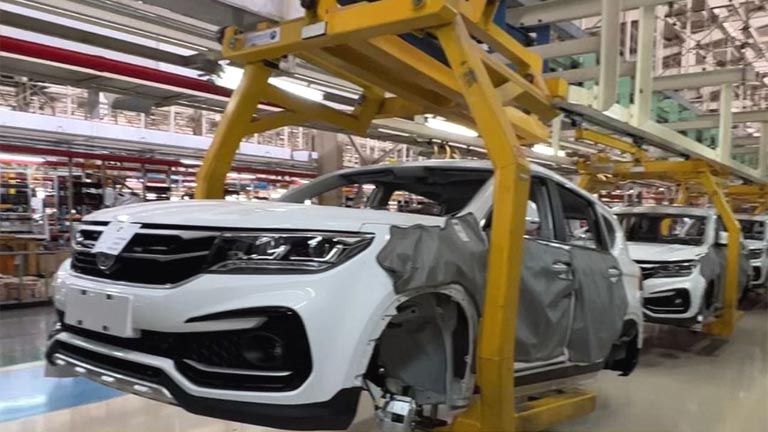
As the world population and economy are growing, automotive and automobile vehicle demand is also increasing every year. Automobile manufacturers have started making a vehicle with suit every person’s lifestyle and budget. Every person wants to own a car or other transportation vehicle so they can reach their destination timely, safely, and easily.
However, every country’s government want to manufacture automobile vehicle in-house, but it is not possible for big automobile brand to set up manufacturing units in every country. Local companies get the initiative to produce vehicles in-house. But the following are the top ten automobile manufacturing countries that are manufacturing international to local brands of vehicles.
The 5 Countries That Make the Most Cars and Commercial Vehicles
According to the data from the Organisation Internationale des Constructeurs d’Automobiles (OICA) and other sources, the top 10 automobile manufacturing countries in 2022 were as follows:
| Rank | Country | Cars | Commercial vehicles | Total |
|---|---|---|---|---|
| 1 | China | 23,836,080 | 3,184,530 | 27,020,610 |
| 2 | United States | 1,751,740 | 8,308,600 | 10,060,340 |
| 3 | Japan | 6,566,360 | 1,269,160 | 7,835,520 |
| 4 | India | 4,439,040 | 1,017,820 | 5,456,860 |
| 5 | South Korea | 3,438,360 | 246,470 | 3,684,830 |
| 6 | Germany | 3,480,360 | 197,460 | 3,677,820 |
| 7 | Mexico | 658,000 | 2,851,070 | 3,509,070 |
| 8 | Brazil | 1,824,830 | 544,940 | 2,369,770 |
| 9 | Spain | 1,785,430 | 434,030 | 2,219,460 |
| 10 | Thailand | 594060 | 1289460 | 1883520 |
China is ahead of the market for cars and commercial vehicle production in 2022, producing more than 27 million vehicles that year. This was even greater than the production values of the other top four countries combined. China’s share of global vehicle production increased to almost 32% in 2022, up from 25% in 2020.
The United States, Japan, India, and South Korea followed China in the ranking, with production volumes ranging from 10 million to 3.6 million units. The United States and Japan mainly produced commercial vehicles, while India and South Korea focused on cars. These countries accounted for about 36% of global vehicle production in 2022. The Italian production was around 452,000 units in 2020, down from just under 542,000 units one year earlier. The main car manufacturers in Italy are Fiat Chrysler Automobiles (FCA), Ferrari, Lamborghini, Maserati, and Alfa Romeo.
The COVID-19 pandemic had a significant impact on the worldwide automotive sector, causing a decline of 15% in global motor vehicle production in 2022. However, in 2022, the automotive industry showed signs of recovery, although the production volume was still below the levels of the pre-pandemic years. The COVID-19 pandemic had a significant impact on the worldwide automotive sector, causing a decline of 15% in global motor vehicle production in 2022.
According to the latest data from Statista, the best-selling car models worldwide in 2022 are: Toyota Corolla: 1.12 million sales, Toyota RAV4: 0.87 million sales, Ford F-Series: 0.79 million sales, Tesla Model Y: 0.76 million sales, Toyota Camry: 0.68 million sales, Honda CR-V: 0.6 million sales, Chevrolet Silverado: 0.59 million sales, Hyundai Tucson: 0.57 million sales, Toyota Hilux: 0.56 million sales, and Ram Pick-up: 0.55 million sales.
The automobile companies spent millions of dollars in research and development of new vehicle model designs, safety checks, and testing new technology. They are bringing new technology into the automobile industry such as:
AVs and AI vehicles can drive without human intervention, cameras, using sensors, and artificial intelligence to navigate and perceive surrounding environments.
Vehicle connectivity is the ability of a car to communicate with other cars, infrastructure, and the cloud.
Electrification is the process of replacing fossil fuels with electricity.
Shared mobility is a broad term that encompasses a variety of transportation services, such as carsharing, bike-sharing, and ridesharing.




